
Choosing the Best AR 15 Iron Sights
Face it – the AR of the future has done away with iron sights as the primary targeting mechanism.
Optics offer tremendous benefits like extended range, low-light visibility, and ease of target acquisition. Even the US Military has largely made the switch to optics for M4’s used in combat situations.
But it is CRITICAL to remember that these high tech replacements for the dependable old iron sights can be disabled in one way or another (damaged, dead batteries). Without a backup, damaged optics render the weapon useless for accurate shooting.
So, you want the benefits of a scope with the unflinching durability of irons – what do you do? Four words: Back Up Iron Sights (BUIS)
BUIS provide critical redundancy when setting up your AR. They can add weight, but having the ability to acquire targets even after your primary sight (optic) goes down is a worthwhile trade-off. So let’s discuss the key things to look for when selecting backup iron sights.
What to look for When Choosing AR 15 Iron Sights
Different heights (same plane, gas block height, micro)
AR 15 Iron sights come in a couple of different configurations, based on the height of the sights. The basic concept is – you need the front and rear sights to be the same height if you want to hit the target.
Where this really comes into play is where you are mounting your front sight. Most backup iron sights come in 2 varieties: “Gas Block” height, and “Same-Plane” height. We’ll explain the difference:
“Gas Block” Sights:
In the gas block BUIS configuration, the front sight post is about 1/4″ higher than the rear sight aperture, to make up for the fact that the front sight is mounted about 1/4″ lower than the upper receiver where the rear sight is mounted. Please note that “gas block” sights are ONLY for mounting on gas blocks that are lower than the upper receiver! Some gas blocks are the same height as the receiver, in which case you would want the “same-plane” sight!
“Same-Plane Sights”
Same plane sights (also known as “rail-mount sights”) are made so the front sight post is at the same height as the rear aperture when the sights put on a flat surface. This means that for these sights, the front sight must be mounted somewhere at the SAME height as the upper receiver. Typically, people will mount the front sight on a free float handguard with a rail on top. Some sight manufacturers also make “micro sights” which work well for some setups. These BUIS are typically “same-plane” and the front and rear sights are shorter than normal sights.
Fixed or Folding
Your overall AR-15 setup will determine whether you need fixed vs. folding BUIS. Fixed iron sights have the advantage of no moving parts, which makes them nearly indestructible. Also, they are always ready – no need to mess with them, just set and forget.
Folding sights have a different purpose – typically you would want folding sights if you need to flip them down to keep them out of the way when you aren’t using them (for example if you have a scope or red-dot on your weapon).
In the end – we recommend that you have fixed sights if you’re using them as the primary targeting system on your AR, but if they are simply a backup, folding is usually preferable.
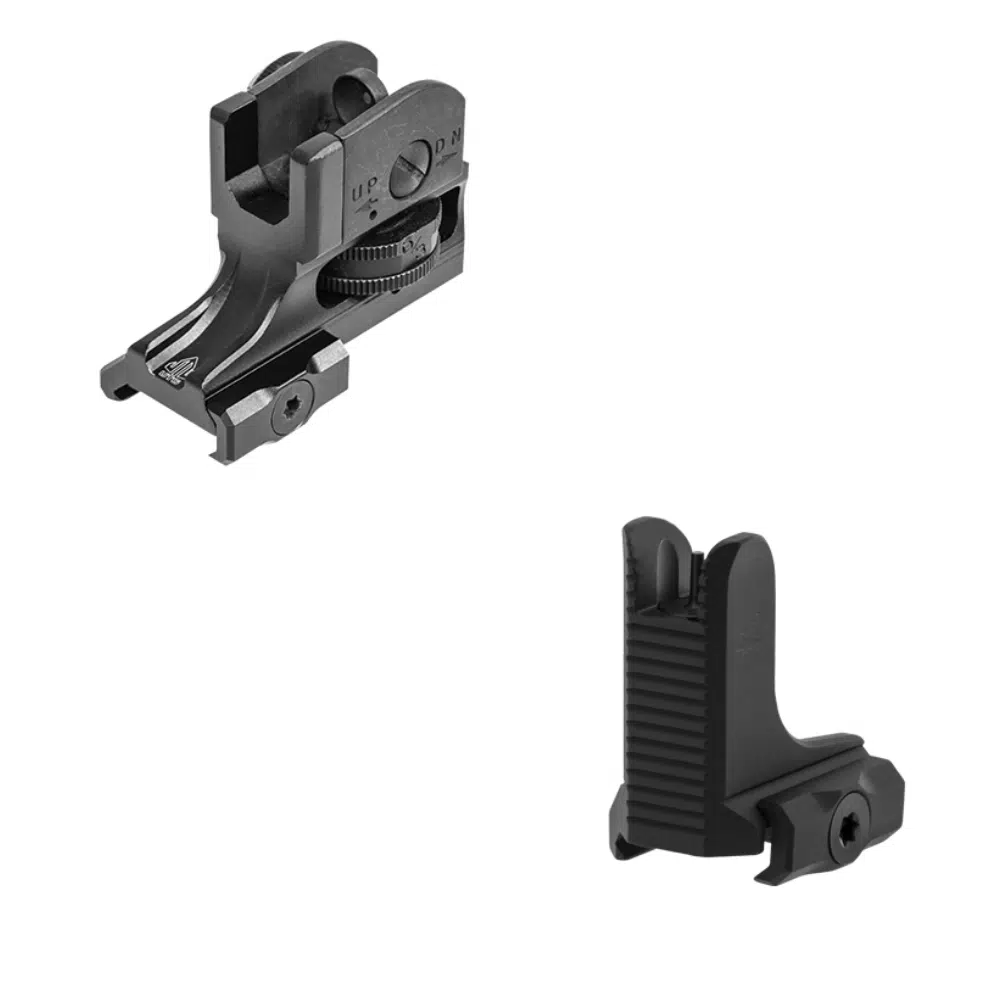
Visibility of the sights (high-visibility sight posts, tritium)
Visibility is key with BUIS, especially in low-light situations. Considering that most sights are black, it can be really tough to see that front sight post in the dark. Also, people with poor eyesight may always have a tougher time using iron sights.
There are a couple of things that you can do to help this lack of sight visibility:
Option 1: Hi-visibility front sight posts. These are usually brightly colored posts create a better contrast when aiming. Tapco high-visibility sight posts are a great example of posts that will help with visibility – but they can still be tough to see in the dark.
Option 2: Tritium. Tritium is a gas that is stored in tiny vials and housed within iron sights. These vials provide a glow-in-the-dark effect that doesn’t need to be “recharged” by sunlight – it glows all the time! Sights with tritium are the best choice for low-light visibility. Troy Tritium Sights are generally regarded as the best ones on the market.
Material (steel, aluminum, polymer)
The most common materials for backup irons sights are steel and aluminum. And while steel sights will be the most durable for long-term use, it’s also heavy – aluminum is also very tough but a little lighter. If weight is a big consideration for you, there are some polymer options. Be careful when buying polymer sights – there are only a couple of good brands out there for these types of sights (we recommend Magpul).
Aperture styles
The aperture of your sight (also known as the peephole) is the hole that you look through in the rear sight – you need to line up the front sight post in this hole for proper aim. On most iron sights, there are two different aperture sizes – the bigger aperture is used for short range situations (easier for quick target acquisition), the smaller aperture is for long-range shots when perfect accuracy is key.
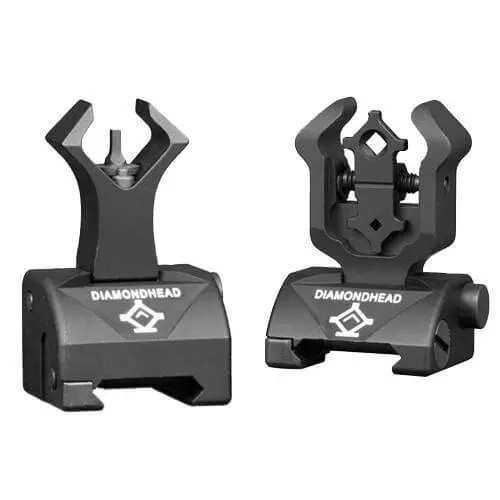
Some AR 15 sights even use diamond-shaped apertures, which many find to be superior for quick target acquisition vs. standard round apertures. Although the choice may be a matter of preference,it can also be a matter of training. Some examples of sights with diamond-shaped apertures are the Troy DOA Sights, and Diamondhead Sights.
45 Degree (Offset) Sights
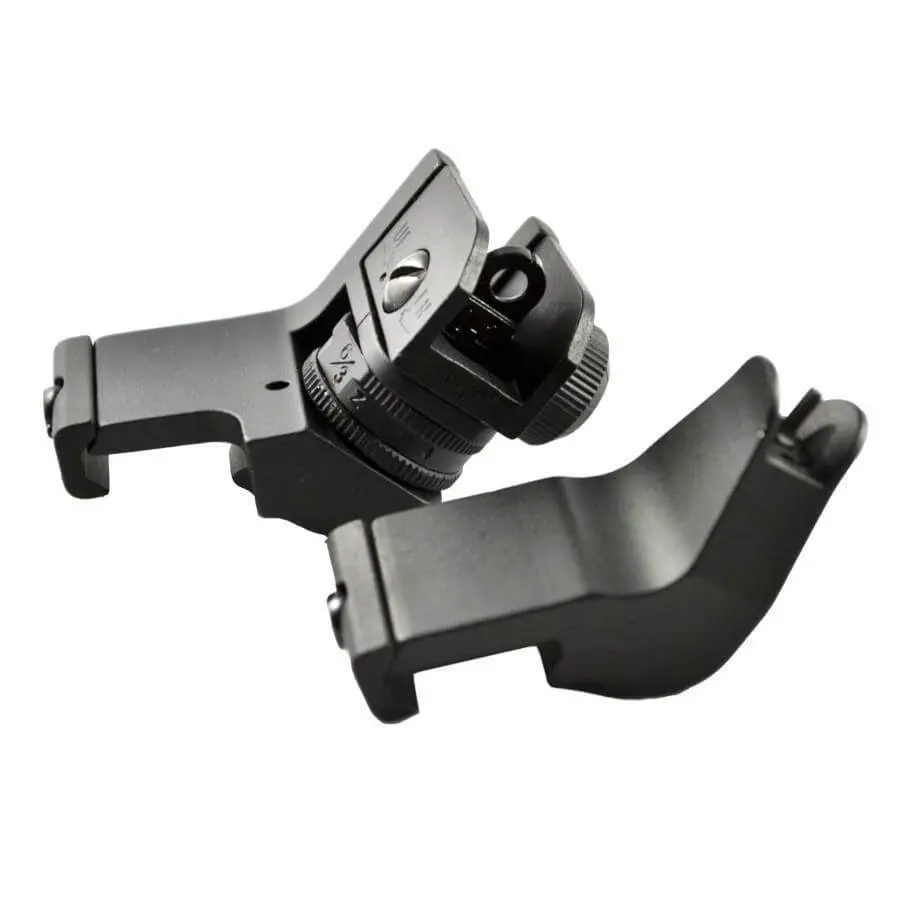
45-degree iron sights (also know as offset sights) are great for quickly transitioning between long and short range targets when you have a scope mounted on your weapon. The way you use the sights is to slightly tilt your rifle, and then look down the sights just like you normally would. These sights are great for any situation where you would quickly switch target distance, such as 3-gun shooting competitions, or combat situations.
So in summary – do you really need Backup Iron Sights for your AR 15? Think of it this way. Even though you don’t plan on using them – it’s the unplanned situations where they are most needed.
One Last Tip
If there’s anyone that knows the AR-15 platform, it’s the US military. As a special offer for our readers, you can get the Official US Army Manual for AR-15/M4/M16 right now – for free. Click here to snag a copy.



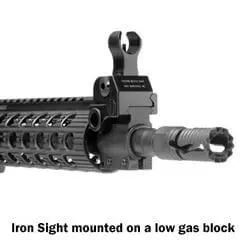
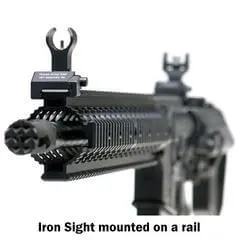
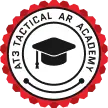
Pros or cons to co-witnessing?
Just purchased a S&W M&P AR-15 5.56/.223 Sport II. The front gas block rail is higher than the receiver rail. What may I do to even this out?
Thank you.
Which iron sights are compatible with the ARO micro red dot and its absolute co witness mount?
All of them, as built to Mil-Spec standards. That’s the same standard referenced by the “absolute co witness” elevation as measured from the rail.
Hey yall just got a ? Can i keep my front iton sight stock sight n get a flip up rear sight
If you have an actual magnified scope mounted, that is the only good reason I know of to utilize folding sights. They will interfere with a scope.
If you’re using a fixed-focused red dot, that works wonderfully with fixed irons in a co-witness format.
That way they compliment, rather than conflict with each other. They are both always there, always in-sync with each other, no fumbling required.
Fixed sights will always have greater repeatability than folding, for obvious reasons.
I always try to add iron sights to my AR Platform just for the reason you outlined here, even if I have to use 45% folding sights. That’s better than nothing.
I want the Official US Army Manual for AR15/M4/M16
Thanks,
Alex